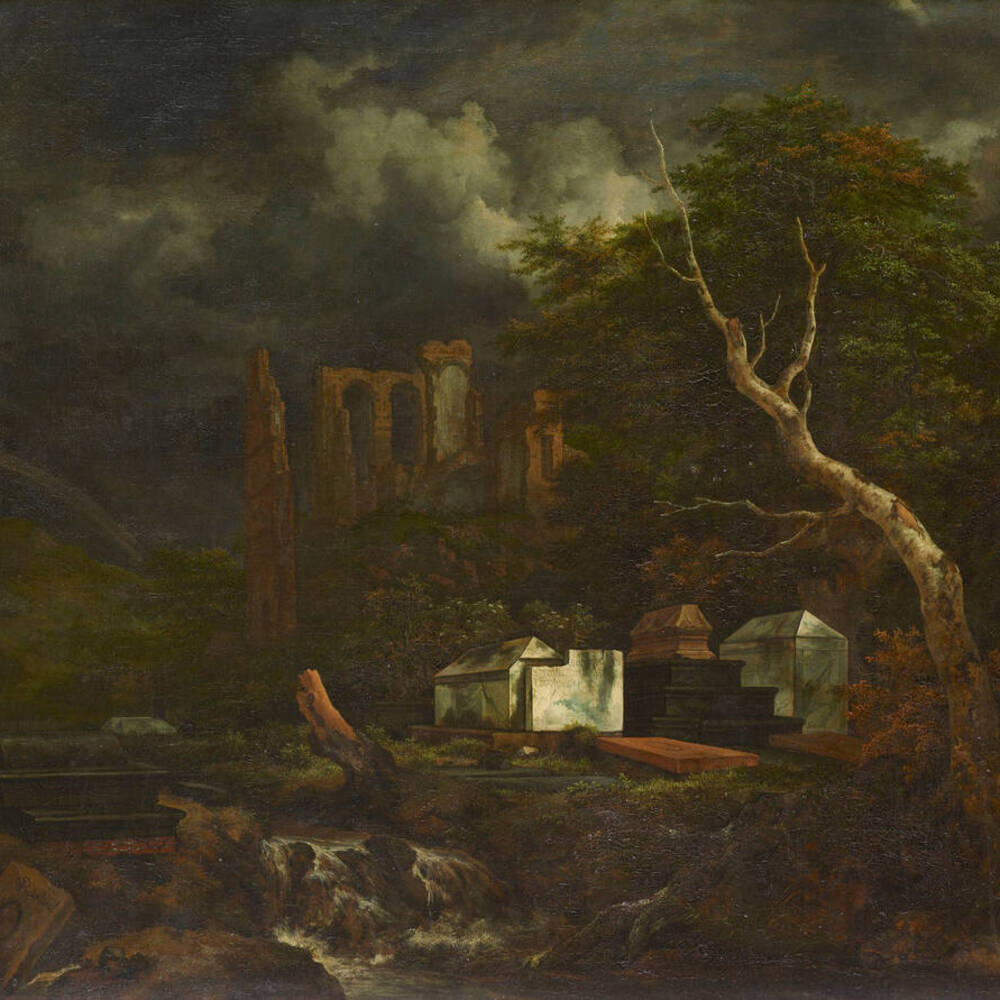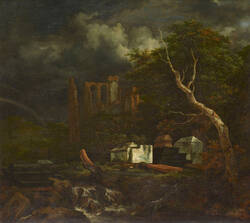On a deserted, long-abandoned burial ground are sarcophagi bearing Hebrew inscriptions; pale twilight causes them to stand out against the dark background. Van Ruisdael had previously drawn the tombs of prominent members of the Jewish-Sephardic community of Amsterdam in the old Beth Haim cemetery in Ouderkerk, outside the city. The sombre mood of the landscape underlines the idea of decay and death, contrasting with the sunlight breaking through the clouds and the rainbow in the background, which are signs of hope.
Further Media
Around 1800, Jacob van Ruisdael’s landscapes, ignored for a time, were rediscovered. As a young man, the great German writer Johann Wolfgang von Goethe saw Ruisdael’s The Jewish Cemetery here in the Dresden collection. In 1816, he published an essay on Ruisdael in the cultural and literary journal Morgenblatt für gebildete Stände. In his essay, Goethe recommend Ruisdael’s The Jewish Cemetery as a model for contemporary landscape painters. Ruisdael, he noted, manages to select, in the most auspicious way, individual motifs from nature and combine them so his viewers can stroll through his picture as if in a park.
Goethe was an idealist. For him, art should fuse sensual beauty with clear rational thought. He expected a painting to captivate his senses, yet also have a didactic message. It was not enough to paint a mere rainbow or, as here, a fogbow. The natural phenomenon ought to say something, to stand for something. Goethe’s credo was that painters are only artists where they no longer copy, but create.
Goethe entitled his essay ‘Ruisdael as Poet’ – and he wrote it with a particular agenda in mind. He was at all not happy with the turn to Romanticism among young contemporary artists. In his view, this was too much sheer emotionalism. By returning to Ruisdael, he hoped to direct their interest more to reason and with it to the content of art. But as we know today, Goethe’s plan failed, since the shift to Romanticism gained a momentum impossible to stop. But Goethe’s essay was not entirely in vain, since it was the first assessment of the work of this Dutch baroque artist in art criticism.
- Location & Dating
- c. 1655
- Material & Technique
- Oil on canvas
- Dimenions
- 84 x 95 cm
- Museum
- Gemäldegalerie Alte Meister
- Inventory number
- Gal.-Nr. 1502

